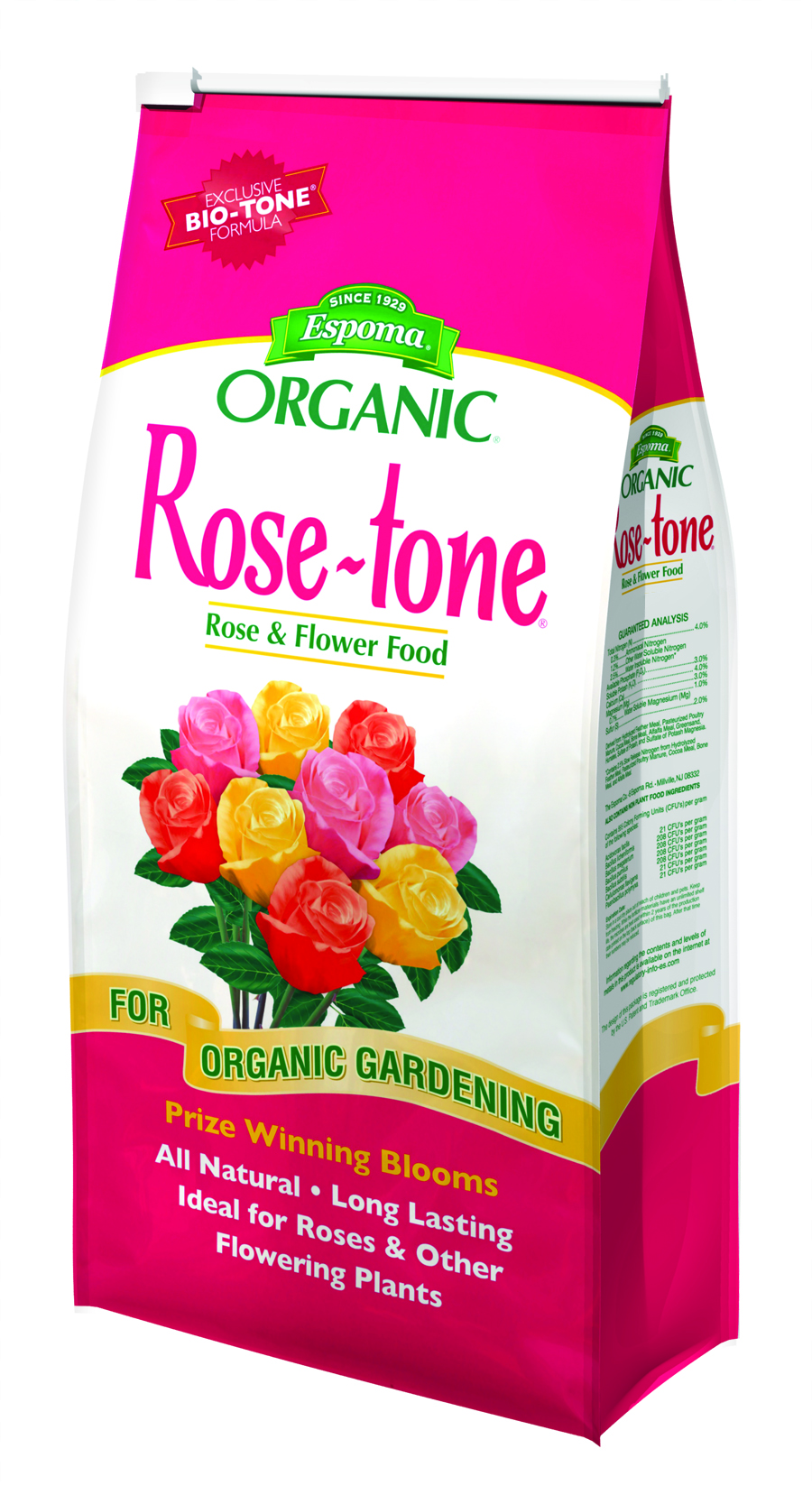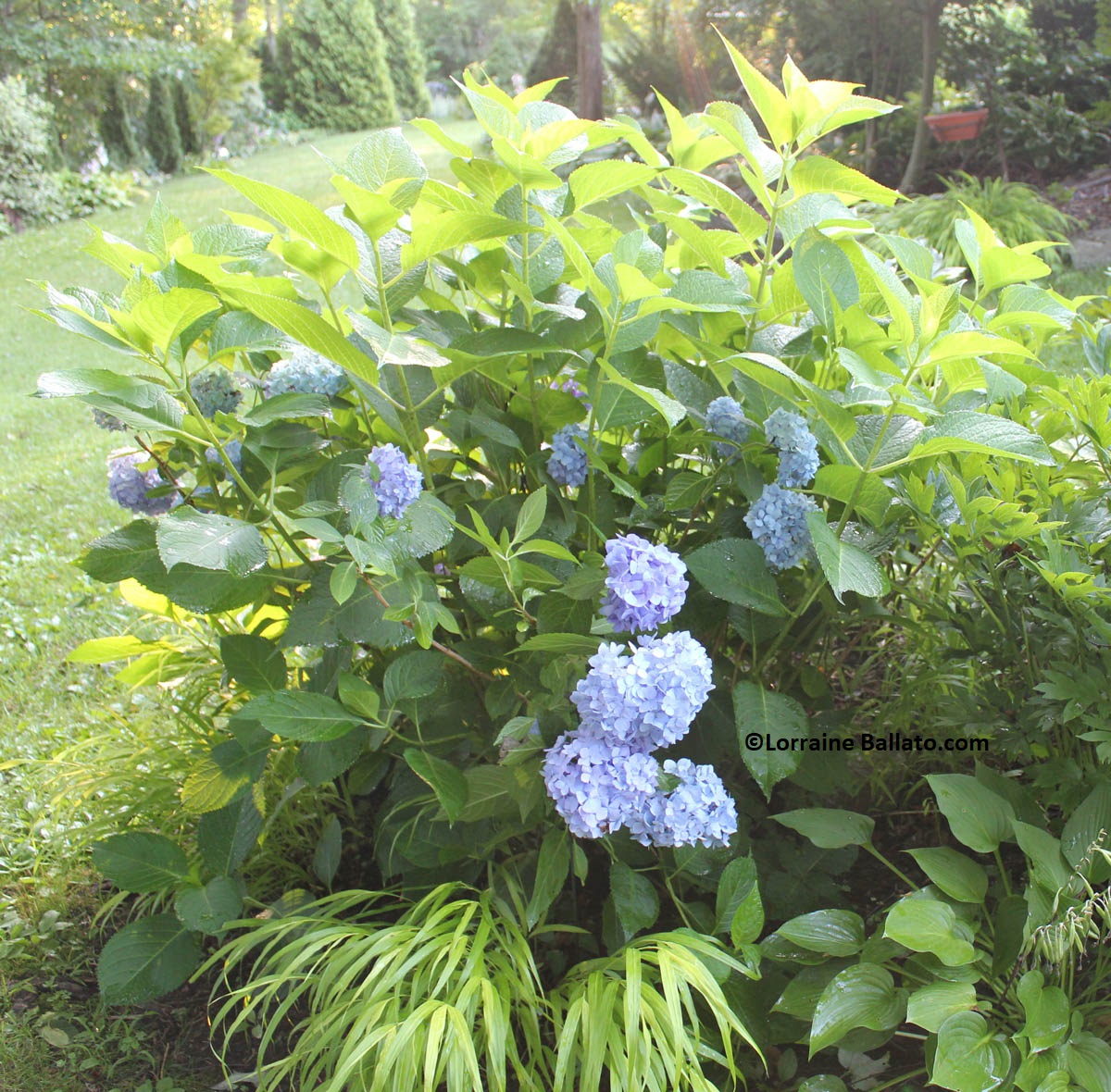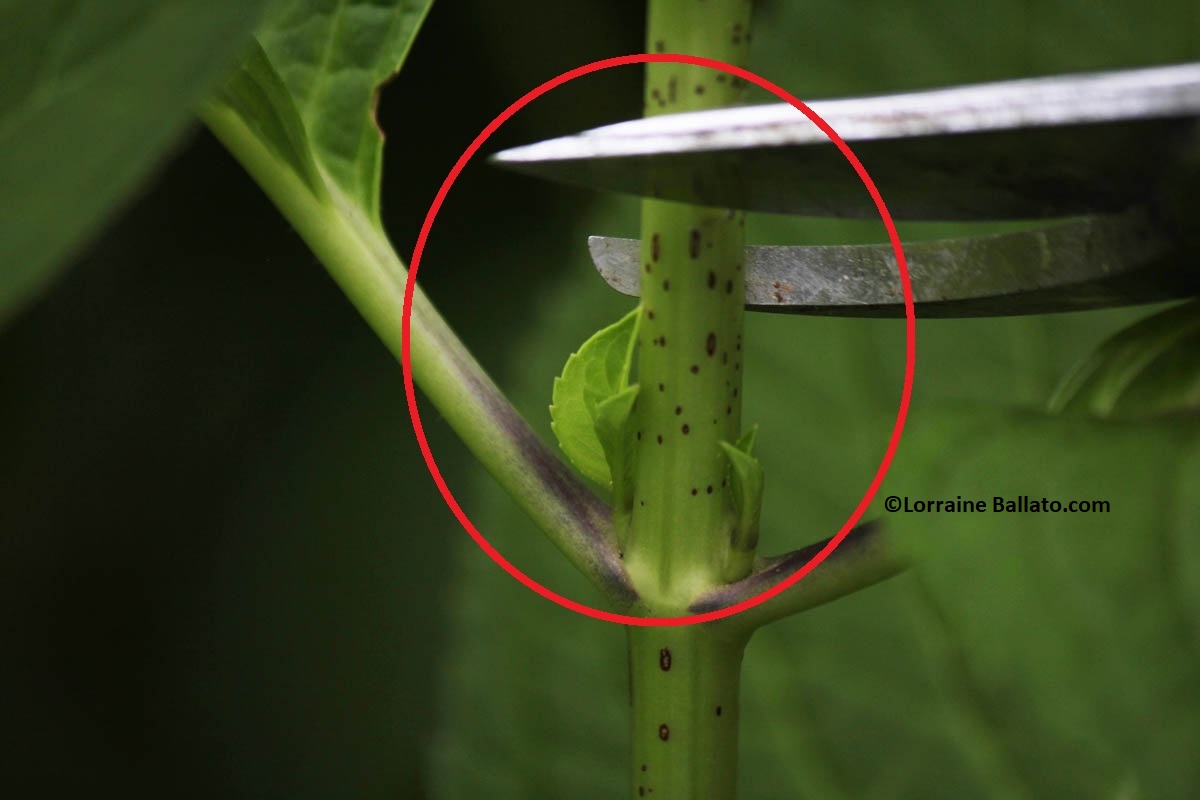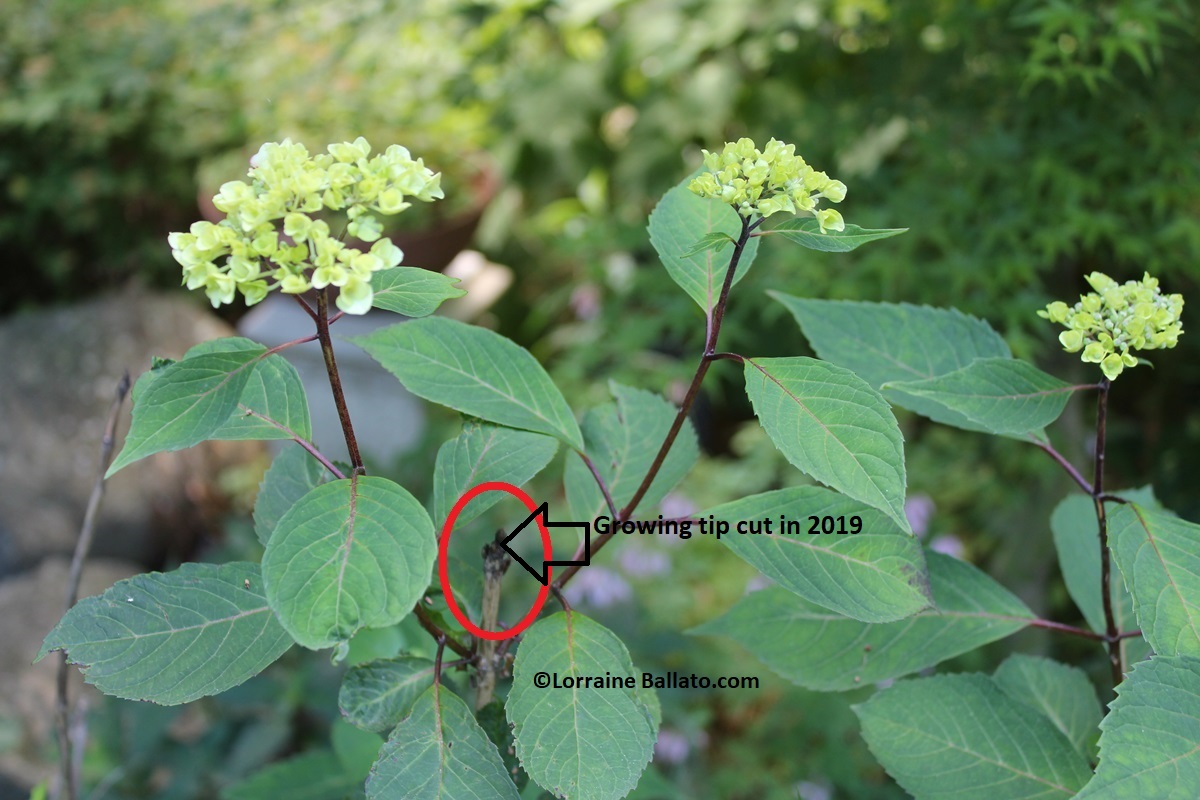You should be having a fabulous hydrangea year. The relatively mild winter and forgiving spring is giving gardeners in the Northeast a fantastic show. Just about every big leaf hydrangea (macrophylla) is flowering. If your plants aren’t performing, take a minute to read a post I just did for the National Garden Bureau. In July it’s time to take care of your hydrangeas to make them thrive, especially for next year’s performance.
WHERE ARE YOUR FLOWERS COMING FROM
So what do you need to know today? First, look over your plants to see if they are blooming from buds along the stems or from the tips. If they are coming from the side shoots, they are rebloomers.
That’s wood that might have been grown last year and made it through the winter. It could also be from wood that was produced this year when you cut off the tip. Maybe that tip got frozen off or the flower has gone by. On rebloomers, the more you cut the tips, the more flowers you will get along the stem for later season color. Once that stem has flowered, it won’t give you any more flowers, ever. So once you cut those flowers for a bouquet, you can cut that stem and stimulate the plant to grow a new stem for future flowers.
FEEDING YOUR PLANTS
While you’re at it, give your plant some fertilizer to strengthen its growing power. Rose food is ideal as is any granulated shrub fertilizer, either organic or a time release product. July fertilizing is just one part of hydrangea care in July
I know gardeners like to add Holly-tone but I would caution you not to do that unless you know your plant needs the additional acid in that product. Your best bet is to do a soil test first, then decide if you need that acidifier.
Make sure you finish fertilizing before the end of July. Starting in August you don’t want to stimulate your plant. You want it to settle down and get ready for dormancy and the rest it needs.
CHANGING THE FLOWER COLOR
Check now for the flower color you want on your hydrangeas. If your plant is pH sensitive (can change the color of its flowers), you should add those amendments over the next few weeks. The plant needs the winter to integrate the amendments into its vascular system. A pH test will give you the current reading of your plant’s soil.
If you want to change it to pink, add Dolomitic lime to get it to a pH range of 6.0 to 7. Higher than that and you could induce an iron imbalance. You want to essentially stop the plant from taking up aluminum, the element that makes blue flowers. A high pH does that.
Blue flowers come on plants that are in soil with a pH reading of 4.5-5.5. Aluminum sulfate amendments will bring your pH down. As always, follow the directions on the label.
Recognize that changing your soil chemistry is not a “one and done” job. You will continue to need to add amendments as the soil will always revert to its natural state.
IMPROVE YOUR PLANTS’ LOOK
Does your plant look like this? Notice that the new growth from this season is hiding the flowers.
If you want to reveal those flowers, now is the time to cut those stems back. A July haircut is the second part of July hydrangea care. A reminder: anytime you cut your plant you will stimulate it, so do this cutting by about August 1. You might even want to take those cuttings and root them for more plants. This is what my plant looked like after removing some top growth.
In addition to improving the look of your plant, July hydrangea care includes cutting your plant now to help it make more flowers for next year. You simply remove the growing tip (“pinching”) just above where you see two leaf nodes.
This forces the plant’s growth hormones into those two nodes which will become stems that can produce flowers going forward. The below photo shows a stem that I “pinched” last year. I got two flowers instead of just one, the desired result.
A Few Other Details
This message is coming via a new email provider. So some of you might be getting it in error. For that, I apologize. I’m better with gardening than I am with technology
Also, as a result of our situation with Covid 19, I am now booking Zoom/virtual talks vs. in person presentations. If your organization wants to discuss these possibilities, use the “Contact Me” tab on my site.
Lastly, if you want to read my writing about other than hydrangeas, you can always go to the Coast of Maine blog where I write a monthly post on a variety of topics. Connecticut Gardener is the other regular publication to which I contribute.
So that’s it for now. My apologies for being absent for so long. I will try to make up for that over the next few weeks to catch you up on hydrangea care, news, info, and just plain musings.
Be well and safe.
6 Secrets for Stunning Hydrangea Flowers
Get my FREE mini-guide with 6 fool-proof tips showing how to grow hydrangeas that produce the most amazing flowers.
No spam - I promise!












